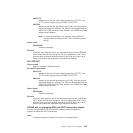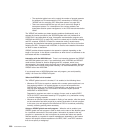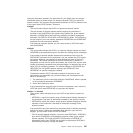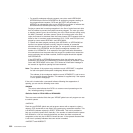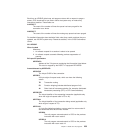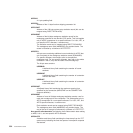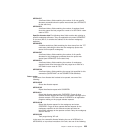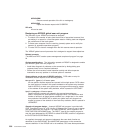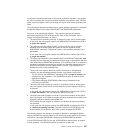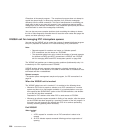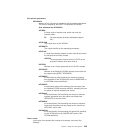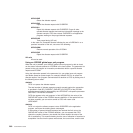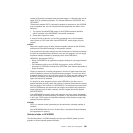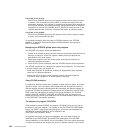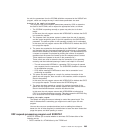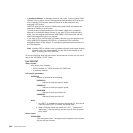to control the existence and length of the queue of allocate requests. If you enable
the exit, the parameters from the connection definition are passed to your XZIQUE
global user exit program, which can change the way in which these parameters are
used.
The exit program also demonstrates how to control allocate requests for a particular
modegroup, based on the same QUEUELIMIT and MAXQTIME parameters.
Overview of the sample exit program: The program uses the exit-specific
parameters passed by CICS to determine the state of the connection, and to
request the appropriate action, as follows:
1. The connection is operating normally; a queue may exist, but is of short length.
In this case, the exit program returns with UERCAQUE to indicate that CICS is
to queue the request.
2. The response from the partner system is slower than the rate of requests
demands, and the queue length has grown to the limit specified on the
QUEUELIMIT parameter. The partner system is still operating normally, but is
overloaded.
In this case, the exit program returns with UERCAPUR to indicate that CICS is
to purge the request.
3. The queue has reached the limit specified by the QUEUELIMIT parameter, and
requests that join the queue are expected to take longer to be satisfied than the
time defined by the MAXQTIME parameter. (The estimated time for a request to
complete is calculated by dividing the number of successful requests since the
queue first formed by the time elapsed since it formed. These statistics are
passed to the exit in the parameter list.)
These criteria are used to determine that the connection is not operating
correctly, and that continued queuing of tasks is not helpful. In this case:
v The exit returns with UERCAKLL requesting CICS to purge all queued user
requests from the connection. The SYSIDERR condition is returned to the
application program.
v CICS issues message DFHZC2300 to warn that a connection is not
performing as expected.
4. The queue has been purged as a result of a previous invocation of the global
user exit program, there are still no free sessions, and the request is about to
be queued.
In this case, the exit program returns with UERCAPUR to indicate that CICS is
to purge the request. This also leaves the UEPRC8 flag set.
5. The queue has been purged as a result of a previous invocation of the global
user exit program. A new allocate request has been received and is about to be
allocated because a session has become free.
CICS invokes the exit program to enable it to indicate that normal processing
can continue.
In this case, the exit program returns with UERCNORM to indicate that CICS is
to continue processing normally. This also causes the UEPRC8 flag to be
unset following this invocation, and CICS to issue message DFHZC2301.
The sample program also monitors the length of queues for modegroup-specific
allocate requests and controls these—in the same way as the queue for the whole
connection—using the QUEUELIMIT parameter and MAXQTIME parameters.
If both UEPRC8 and UEPRC12 are set, UERCNORM is required twice to resume
normal operation. The UEPRC8 condition is reset first in this case.
Chapter 1. Global user exit programs 257



